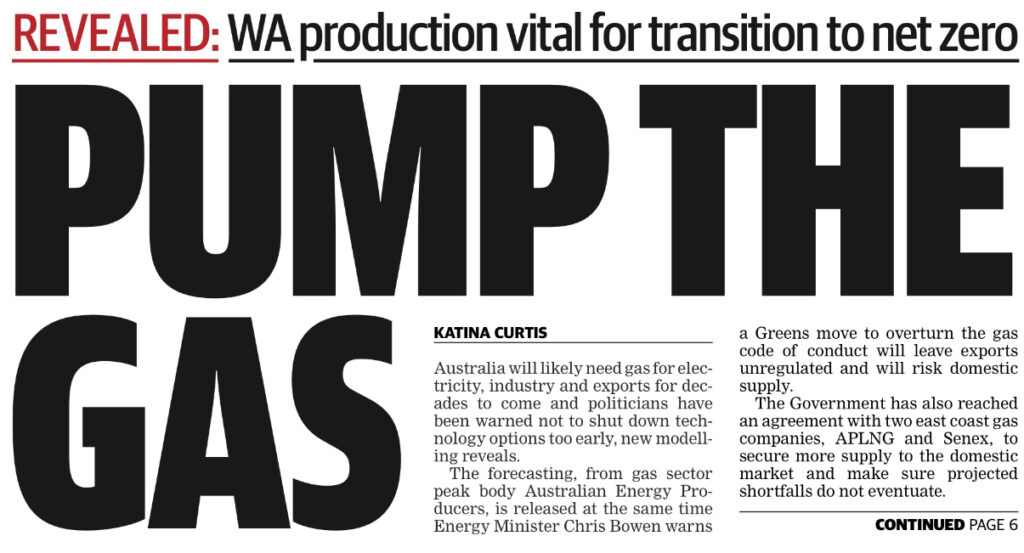


Article by Katina Curtis courtesy of the West Australian.
Australia will likely need gas for electricity, industry and exports for decades to come and politicians have been warned not to shut down technology options too early, new modelling reveals.
The forecasting, from gas sector peak body Australian Energy Producers, is released at the same time Energy Minister Chris Bowen warns a Greens move to overturn the gas code of conduct will leave exports unregulated and will risk domestic supply.
The Government has also reached an agreement with two east coast gas companies, APLNG and Senex, to secure more supply to the domestic market and make sure projected shortfalls do not eventuate.
Australian Energy Producers asked Ernst & Young to model scenarios for gas supply and demand in Australia to help inform the sector body’s submission to the future gas strategy.
It modelled scenarios based on work by the International Energy Agency, the Intergovernmental Panel on Climate Change, the World Bank, petroleum giant BP, and the international banking body Network for Greening the Financial System.
All incorporated the use of gas to produce hydrogen, and carbon capture and storage.
Depending on how fast other technologies, such as green hydrogen are developed, when other countries phase out coal, and the cost of renewables, demand for Australian gas is likely to peak between 2030 and 2050, the report suggests.
However, it does not consider which of its three scenarios is the most likely to play out, and it cautions they do not necessarily limit global warming to 1.5C in line with the Paris Agreement.
The report says these possible scenarios highlight issues for the Government to consider with its future gas strategy.
That included the need for a range of technologies in its long-term bid to reach net zero and the necessity of further investment in gas.
“Preparing for only one pathway leaves Australia extremely vulnerable to developments that are outside Australia’s control,” the report says.
“Should any energy pathway or technology face challenges in its deployment, it will be critical to have alternative energy sources in the mix to maintain energy security and affordability and to keep emissions reductions efforts on track.”